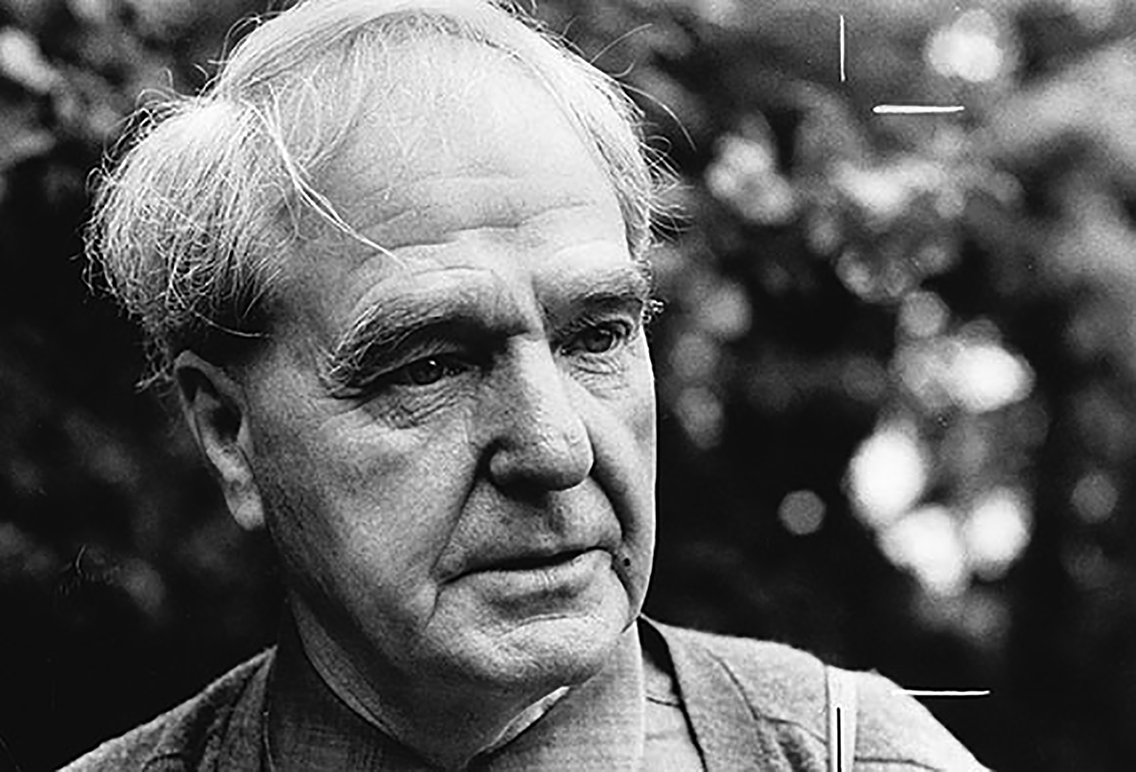

In 1975 Mayor Farsi contacted Henry Moore, through the architect Julio Lafuente, to discuss the possibility of purchasing his work for the city. In his letter of 13 August 1975, he wrote: ‘Both Jeddah and Mecca as well as any other town in Saudi Arabia lacks the existence of marble work
in the streets and squares considering the fact that our Moslim Religion forbids the statues that resemble humans or animals. Therefore, your art which is different will be acceptable and will be the first in our towns.’ Two years later, Mayor Farsi visited Moore in his studio in England, and agreed on the purchase of three sculptures – ‘Two Large Forms’ (Three Piece Reclining Figure No .1), ‘Large Spindle Piece’ and ‘Oval with Points’, at a total cost of US$675,000.
In 1954 Henry Moore was asked to create a sculpture for the courtyard of the new Olivetti office building in Milan. He recalled that when he visited the site, ‘A lone Lombardy poplar growing behind the building convinced me that a vertical work would act as the correct counterfoil to the horizontal rhythm of the building.’ This idea grew ultimately into the 'Upright Motive' sculpture series. Predominantly geometric elements are piled one on top of the other. Blocks and irregularly placed cubes or discs articulate the verticals: ‘I started balancing different forms one above the other – with results rather like the NorthWest American totem poles – but as I continued, the attempt gained more unity.’

The son of a Yorkshire coalmining engineer, after war service in France Henry Moore studied at Leeds School of Art in 1919. In 1921 he won a scholarship to the Royal College of Art, London. An enthusiastic modernist, Moore kept in touch with European developments and admired the work of the British sculptors Epstein, Gaudier Brzeska and Gill.
In 1928 he received his first commission, a relief for the London Underground Headquarters. His work of this period shows the influence of Epstein and ‘primitive’ Mayan art.
During the 1930s Moore was associated with the group of Hampstead artists that included Ben Nicholson and Barbara Hepworth. The abstract biomorphic carvings of this period, such as Family (1935; Henry Moore Foundation), are among his most innovative works and, like Hepworth, he also explored the potential of the pierced form. ‘The first hole made through a piece of stone is a revelation’, he wrote, ‘the hole connects one side to the other, making it immediately more three dimensional’.
In 1940 Moore was commissioned as a war artist and he made numerous drawings of sleepers in the London Underground during the Blitz. Over the next decade he established an international reputation, receiving the International Sculpture Prize at the Venice Biennale of 1948. The Henry Moore Foundation, based at Moore’s home in Much Hadham, Hertfordshire, continues to champion his work and support the promotion of the arts.